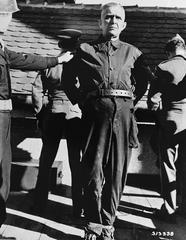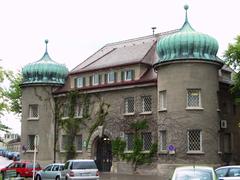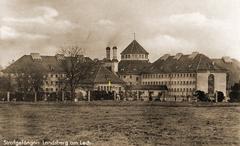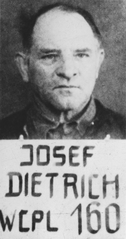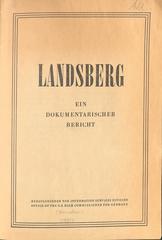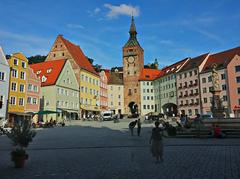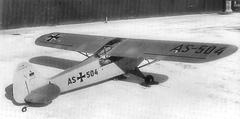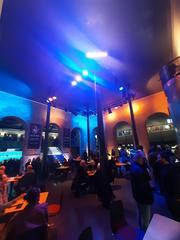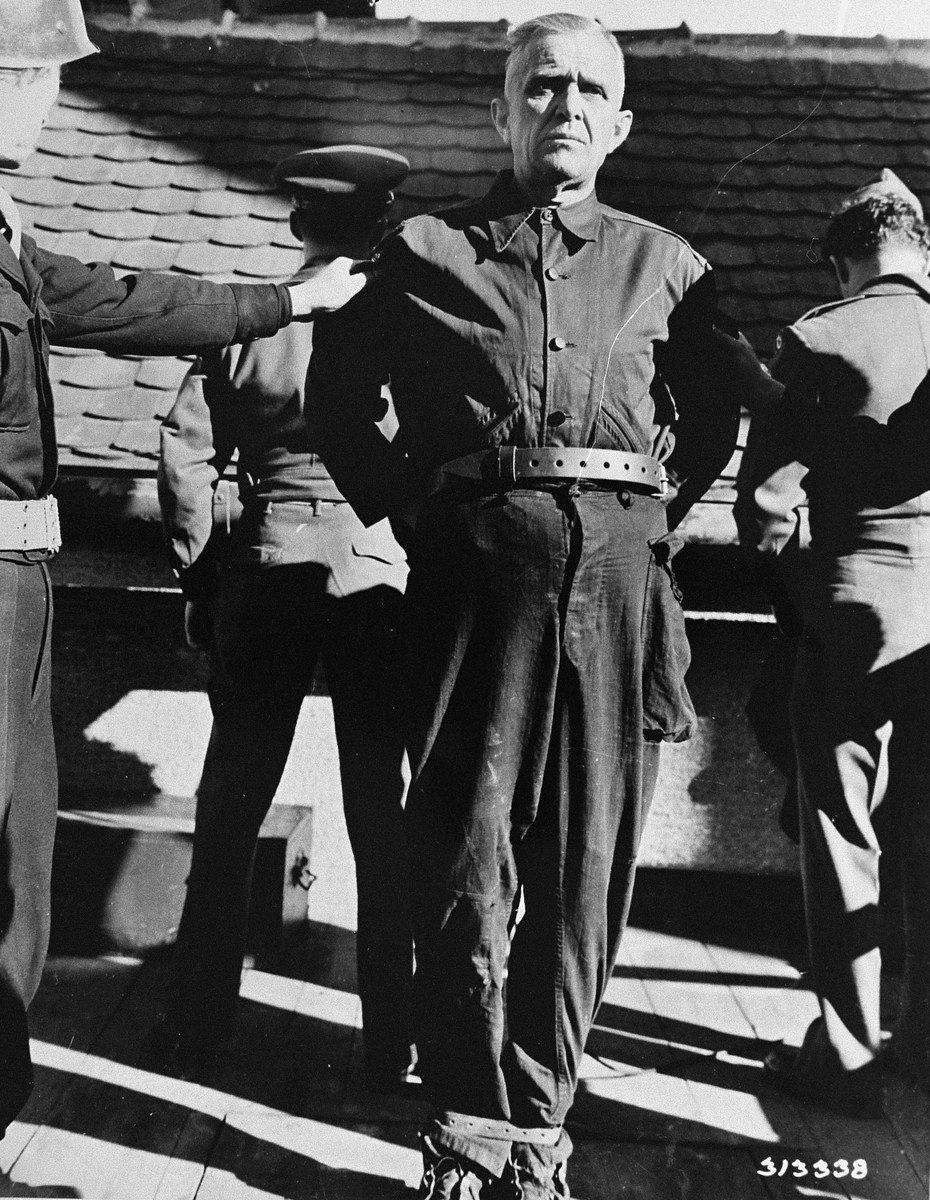
Landsberg Prison: Visiting Hours, Tickets, and Historical Significance in Landsberg am Lech
Publication Date: 14/06/2025
Introduction
Landsberg Prison, located on the outskirts of Landsberg am Lech in Bavaria, Germany, is an iconic site that embodies both architectural innovation and significant historical events of the 20th century. Most notably, it was the incarceration site of Adolf Hitler following the failed Beer Hall Putsch in 1923, during which he wrote much of “Mein Kampf.” After World War II, the prison became infamous as the detention and execution site for Nazi war criminals. Today, it remains an active correctional facility, and while public access is highly restricted, the prison’s imposing Art Nouveau façade and its broader historical context continue to attract visitors interested in Germany’s complex past (Landsberg Prison: History, Tours, and Visitor Info, Atlas Obscura, Bavaria Travel).
This guide covers the prison’s historical significance, practical visiting information, conduct expectations, and recommendations for nearby attractions, ensuring that visitors can approach this landmark with respect and awareness.
Historical Overview
Origins and Early Years (1908–1933)
Landsberg Prison (Justizvollzugsanstalt Landsberg am Lech) was constructed between 1908 and 1910, designed by Hugo von Höfl in the Art Nouveau style. Its cross-shaped plan follows the Panopticon concept, allowing efficient surveillance of inmates. The prison originally housed high-ranking convicts under Festungshaft, a more lenient form of detention with relative privileges (Bavaria Travel).
Hitler’s Imprisonment and the Nazi Era (1923–1945)
Following the failed Beer Hall Putsch in 1923, Adolf Hitler was sentenced to 264 days in Landsberg Prison, where he authored the first volume of “Mein Kampf.” The relatively comfortable conditions—such as visitor privileges and exemption from forced labor—enabled Hitler’s political maneuvering. The prison later became a propaganda symbol for the Nazi regime and a pilgrimage site, especially cell number 7, where Hitler was held (theeuroroadtrip.eu, adriandamian.medium.com, thejc.com).
During WWII, the region also became associated with the Kaufering concentration camp subcomplex, and over 200 inmates died due to mistreatment or executions in the prison’s final wartime years.
Allied Occupation and War Crimes Trials (1945–1958)
After liberation by American troops in 1945, the prison was used by the Allies as “War Criminal Prison No. 1.” It held and executed Nazi war criminals convicted in the Nuremberg and Dachau trials, with 252 executions taking place between 1945 and 1951. The prison was returned to German control in 1958 (Spiegel International; Traces of War).
Postwar Era to Present
Today, Landsberg Prison operates as a modern correctional facility under the Bavarian Ministry of Justice, focusing on rehabilitation. Its legacy as a witness to pivotal 20th-century history remains significant (Justiz Bayern).
Visiting Landsberg Prison: Practical Information
Public Access, Visiting Hours, and Tickets
- General Access: Landsberg Prison is an active correctional facility and is not open for general tourism. There are no regular public visiting hours or tickets available.
- Authorized Visits: Only officially approved visitors—primarily legal representatives or family members of inmates—may enter, and these must be arranged via telephone. The appointment line is open Monday–Wednesday, Saturday, and Sunday from 18:30 to 21:30 at +49 (0)8191 126 451 (Justiz Bayern).
- Special Events: Occasionally, guided tours or memorial events may be organized by local historical societies or the Landsberg Tourist Information Office. Participation requires advance registration and tickets, with priority often given to survivors, descendants, or official delegations (Landsberg Tourist Information).
Viewing the Prison Exterior
- Architecture: The Art Nouveau façade, designed by Hugo von Höfl, can be admired from public roads and sidewalks. The Panopticon-inspired structure and massive brickwork convey the gravity of the site (Wikipedia).
- Photography: Permitted from public areas, but visitors should avoid disruptive behavior and respect the privacy of staff and inmates.
Conduct and Etiquette
- Respectful Behavior: Keep voices low, dress modestly, and strictly avoid any glorification of Nazi history, including the display of Nazi symbols or memorabilia (which is illegal in Germany) (Tapped Out Travellers).
- Photography: Avoid selfies or staged photos; always follow staff and signage regarding restrictions.
- No Entry Without Authorization: Unauthorized entry is prohibited and may result in legal consequences.
Accessibility and Getting There
- Location: Landsberg Prison is on the western outskirts of Landsberg am Lech, about 65 km west-southwest of Munich and 35 km south of Augsburg (Munich Travel).
- By Car: Reachable via the A96 motorway, with ample nearby parking.
- By Public Transport: Regular trains run from Munich to Landsberg am Lech; from the town center, the prison is accessible by taxi, bicycle, or on foot.
- Accessibility: The perimeter is accessible via public sidewalks, which are generally suitable for visitors with mobility needs, though there are no dedicated visitor facilities.
Nearby Historical and Educational Sites
- European Holocaust Memorial (Kaufering VII): Located nearby, this memorial preserves the history of a Dachau subcamp and offers educational resources (Landsberger Zeitgeschichte).
- Landsberg Old Town: Features medieval architecture, museums, and historical walking tours (Munich Travel).
- Lechpark Pössinger Au: A nature park ideal for quiet reflection and walks.
- Other Sites: The Dachau Concentration Camp Memorial is within driving distance for those interested in WWII history.
Tips for a Respectful and Informative Visit
- Research Before You Go: Understand the historical weight of the site; familiarize yourself with its role from Hitler’s incarceration to its postwar use.
- Combine with Other Local Sites: The prison’s exterior viewing can be paired with visits to Landsberg’s old town and memorials for a comprehensive historical experience.
- Plan Ahead: Check the Landsberg Tourist Information Office for any updates on special events or tours.
- Respect Security: Do not approach or linger near entrances, and do not attempt to interact with staff or inmates.
- Reflect on the Experience: Take time for personal reflection on the lessons of history, totalitarianism, and remembrance.
Frequently Asked Questions (FAQ)
Q: Can I tour the inside of Landsberg Prison?
A: No, the prison is not open for general tours. Entry is limited to authorized visitors or participants in special, pre-arranged tours or events.
Q: Are there memorials or exhibits on-site?
A: There are no memorials or exhibits within the prison. For historical context, visit the European Holocaust Memorial at the former Kaufering VII camp nearby.
Q: Is photography allowed?
A: Photography is permitted from public areas outside the prison but should be discreet and respectful.
Q: How do I get to the prison?
A: Travel by car via the A96 or by train to Landsberg am Lech, then taxi, bike, or walk to the prison.
Q: Is the site accessible for visitors with disabilities?
A: There are no dedicated visitor facilities, but public sidewalks offer general accessibility.
Q: How can I participate in a guided tour or event?
A: Check with the Landsberg Tourist Information Office for upcoming tours and registration requirements.
Visual Highlights
Caption: The Art Nouveau façade of Landsberg Prison as seen from the public road.
Caption: The European Holocaust Memorial located near Landsberg Prison.
Caption: The historic medieval town center of Landsberg am Lech.
Contact and Official Information
- Prison Appointments: +49 (0)8191 126 451 (appointment line open Monday–Wednesday, Saturday, Sunday, 18:30–21:30)
- Official Prison Website: Justizvollzugsanstalt Landsberg am Lech
- Tourist Office: Landsberg Tourist Information
- European Holocaust Memorial Foundation: Landsberger Zeitgeschichte
Summary and Final Thoughts
A visit to Landsberg Prison is an opportunity to reflect on some of the most consequential moments in modern history. While public access is restricted, observing the site from outside and participating in guided events or exploring related memorials in the region can provide essential historical context. Approach your visit with humility and respect, and take advantage of local resources to expand your understanding of this significant landmark. For the most current information on access, hours, and events, consult the official tourism and correctional resources (Spiegel International, Justiz Bayern, Landsberger Zeitgeschichte, Bavaria Travel).
Sources and Official Information
- Landsberg Prison: History, Tours, and Visitor Info
- Landsberg am Lech – River Sightseeing
- Justizvollzugsanstalt Landsberg am Lech
- Landsberg Tourist Information
- Adolf Hitler’s Time in Jail: Flowers for the Führer in Landsberg Prison
- Landsberg Prison – Where Hitler Wrote Mein Kampf
- European Holocaust Memorial – Landsberger Zeitgeschichte
- Landsberg am Lech Travel Information
